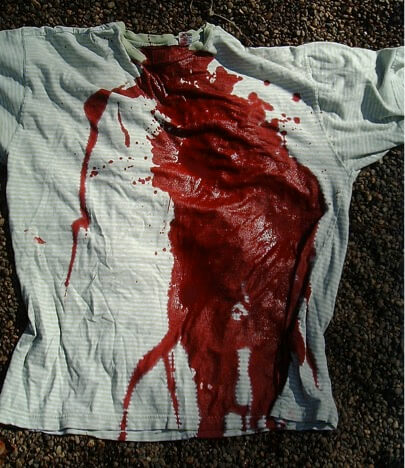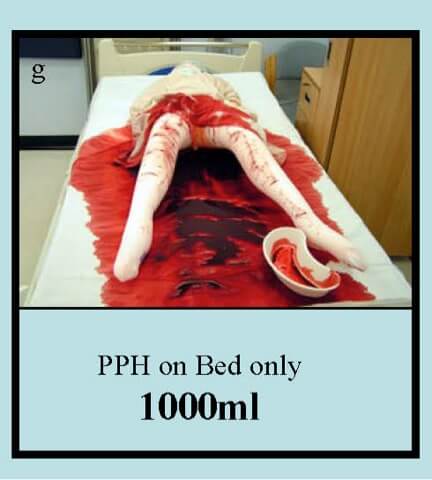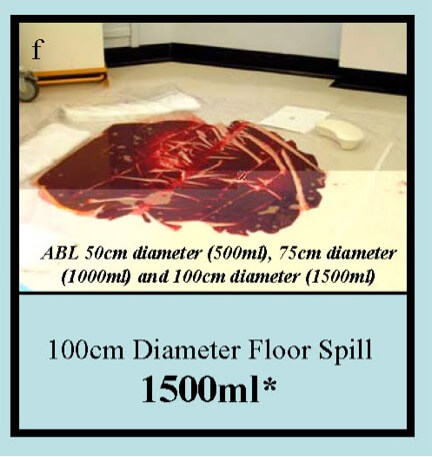
Visual Estimation of Blood Loss
- Posted by Mike Shertz MD/18D
- Categories (M) Massive Hemorrhage
Knowing the quantity of blood loss helps estimate the likelihood of shock
🕖 Reading Time, 5 minutes
Having a sense of how much blood a trauma patient “spilled” on the ground can be very helpful for understanding and estimating the casualty’s potential for shock. Unfortunately, accurate visual estimation of blood loss and external blood volume is very challenging.
A Simple model for estimating blood loss:
As a former SF medic and Emergency Physician, I lean more toward describing blood loss in three categories:
#1 - “There was some bleeding” – It looked more dramatic then serious, likely < 500 ml
#2 – “There was a lot of blood” – It was dramatic and concerning, likely 500ml to 1 L
#3 – “There was a s**t ton of bleeding” – I seriously wondered if somebody was going to die right now, likely much more than a liter.
Inaccuracies in visual estimation of blood loss:
Estimations of blood volume on carpets and concrete tend to lead to large underestimations. One liter of blood on carpet had a mean estimation of 347 ml. 1,500 ml of blood on concrete had a mean estimation of 885 ml. This means providers typically underestimate the actual blood volume by 1/2 to 2/3. In the same study, clothing lead to substantial overestimation. 500 ml blood volume on clothing resulted in an average guess of a mean estimate of 1,253 ml. This is an overestimation of 2 to 3 fold.
While most paramedics report a visual estimation of blood loss at the scene of trauma patients, half don’t believe their own estimation is accurate. Across multiple studies, there is no correlation between the accuracy of the visual estimation of blood loss, the level of training, or years of EMS experience.
Even among physicians, accurate estimates of spilled blood volume is difficult. Anesthesiologists tend to overestimate and surgeons underestimate blood loss.
In one study, 92 EMS providers had an accuracy rate of 8% estimating a volume of blood at a simulated accident scene. Accurate was defined as within 20% of the actual volume. They could only estimate to within 50% accuracy a quarter of the time. 87% underestimated the quantity of blood. Generally, small volumes of blood (150 ml) are overestimated and large volumes underestimated.

The MAR method
In the last few years, the “MAR method” has gained popularity to estimate blood loss. This is similar in concept to the Palmer method of burn estimation. The MAR method advises the amount of blood volume that can be covered with one fist of the provider is about 20 ml. In this case, the prehospital provider places their fist, palm up, 2 inches above the blood pool. In this estimation model, the number of side-by-side “fists” it takes to cover the blood pool multiplied by 20 ml provides the estimated volume.
Problems with this method include:
The time it would take to count side-by-side fists over a larger blood pool the study was only done on non-absorbent surfaces (carpet or clothing wouldn’t allow the method to work in the authors’ opinion); and the need to place the fist so close to the blood pool. If the fist is higher than 2 inches, it covers more space, and thus accounts for increased estimated volume. Think about what you can see looking through a pinhole close to your eye versus at a distance.
Using this method in large volume estimations (750 ml) increased the accuracy by 40% compared to a simple visual guess/estimation. However, this still wasn’t particularly accurate, underestimating a 750 ml blood pool by 20%. Simple visual best guess was slightly more accurate on average in estimating the blood volume, but had a much wider standard deviation, meaning the range of guesses was quite broad. By statistics that makes this method look better, but is it?
Take home points:
Accurate estimation of blood volume is very difficult. Porous surfaces like carpet, grass, and gravel encourage underestimation because the blood soaks in and there is no way to account for this. Clothing seems to lead to massive overestimation. One fist covers about 20 ml blood volume but using your fist to estimate a liter of blood loss would require 50 “fists”. How practical is that?
As an example of how difficult any estimation is, check out these standardized examples. Personally, the large blood pool on the ground looks less dramatic to me than the postpartum hemorrhage on the bedsheets. See how hard this is?


Interested in learning how to stop massive hemorrhage and be an immediate responder in an emergency? Try our online courses, or get started with a sample of the material in the preview course
Dr. Mike Shertz is the Owner and Lead Instructor at Crisis Medicine. Dr. Shertz is a dual-boarded Emergency Medicine and EMS physician, having spent over 30 years gaining the experience and insight to create and provide his comprehensive, science-informed, training to better prepare everyday citizens, law enforcement, EMS, and the military to manage casualties and wounded in high-risk environments. Drawing on his prior experience as an Army Special Forces medic (18D), two decades as an armed, embedded tactical medic on a regional SWAT team, and as a Fire Service and EMS medical director.
Using a combination of current and historical events, Dr. Shertz’s lectures include relevant, illustrative photos, as well as hands-on demonstrations to demystify the how, why, when to use each emergency medical procedure you need to become a Force Multiplier for Good.



